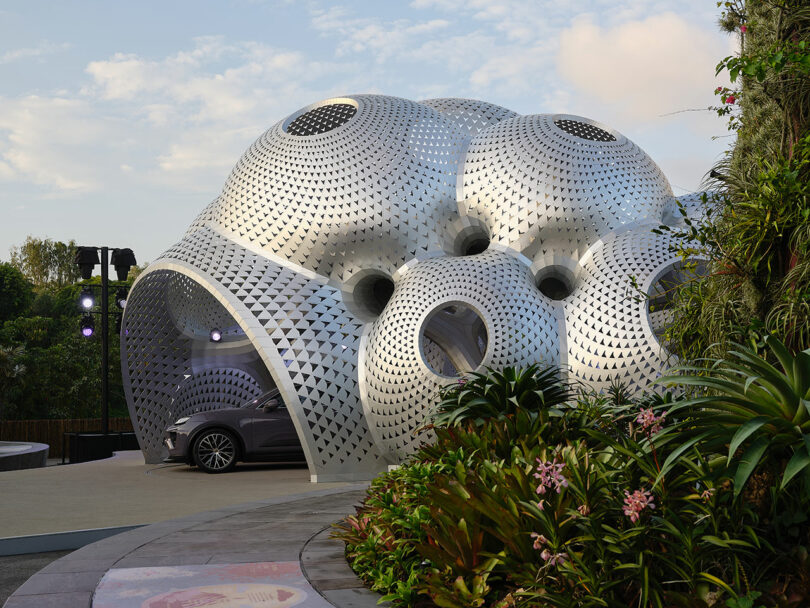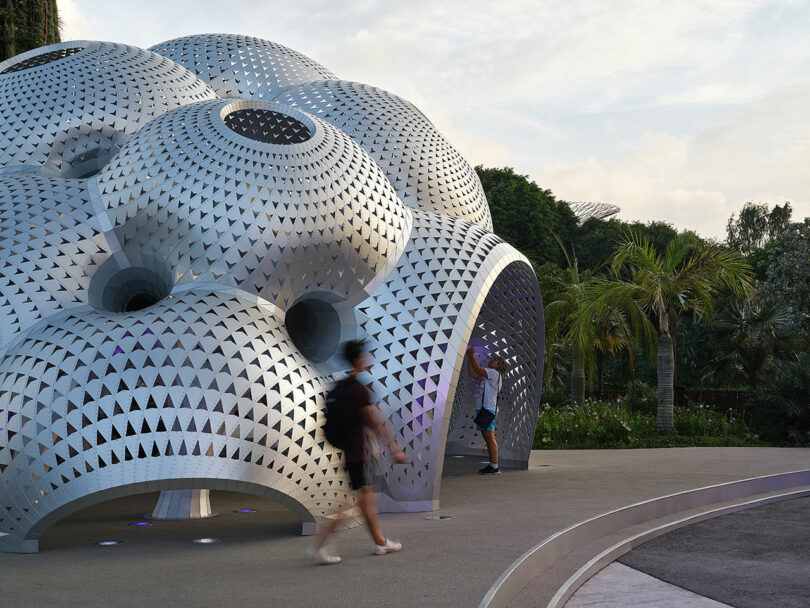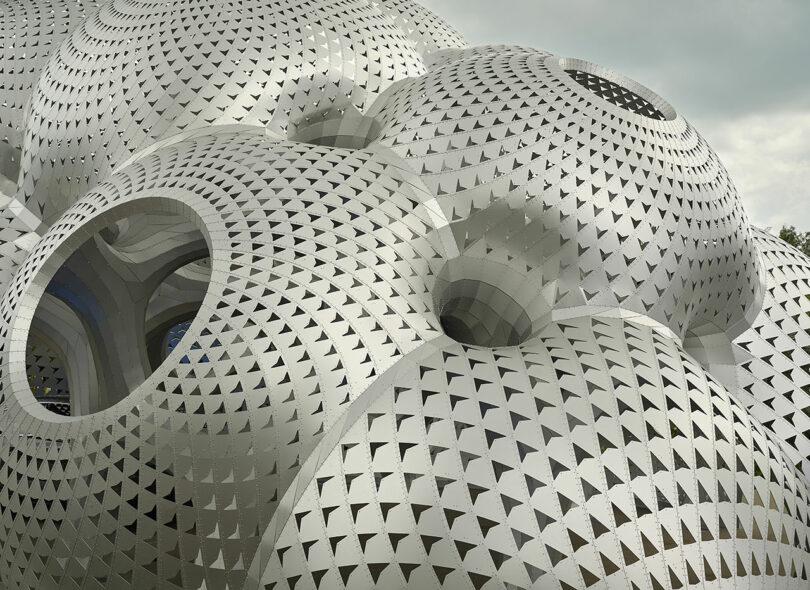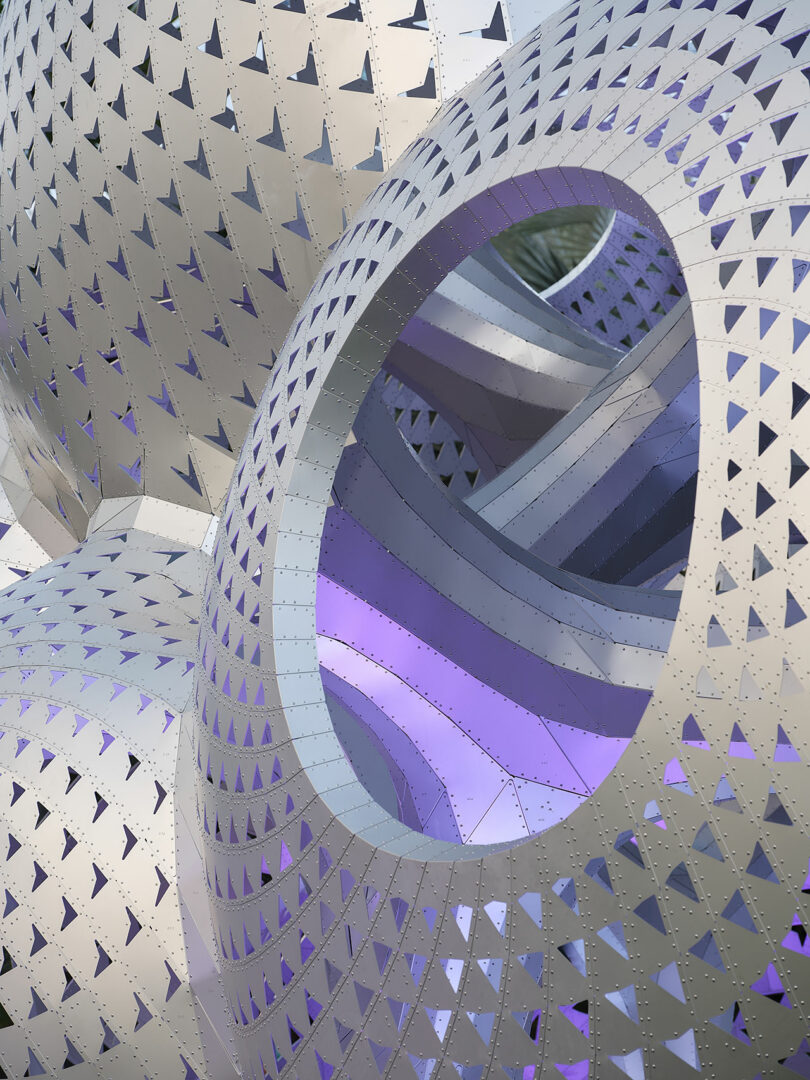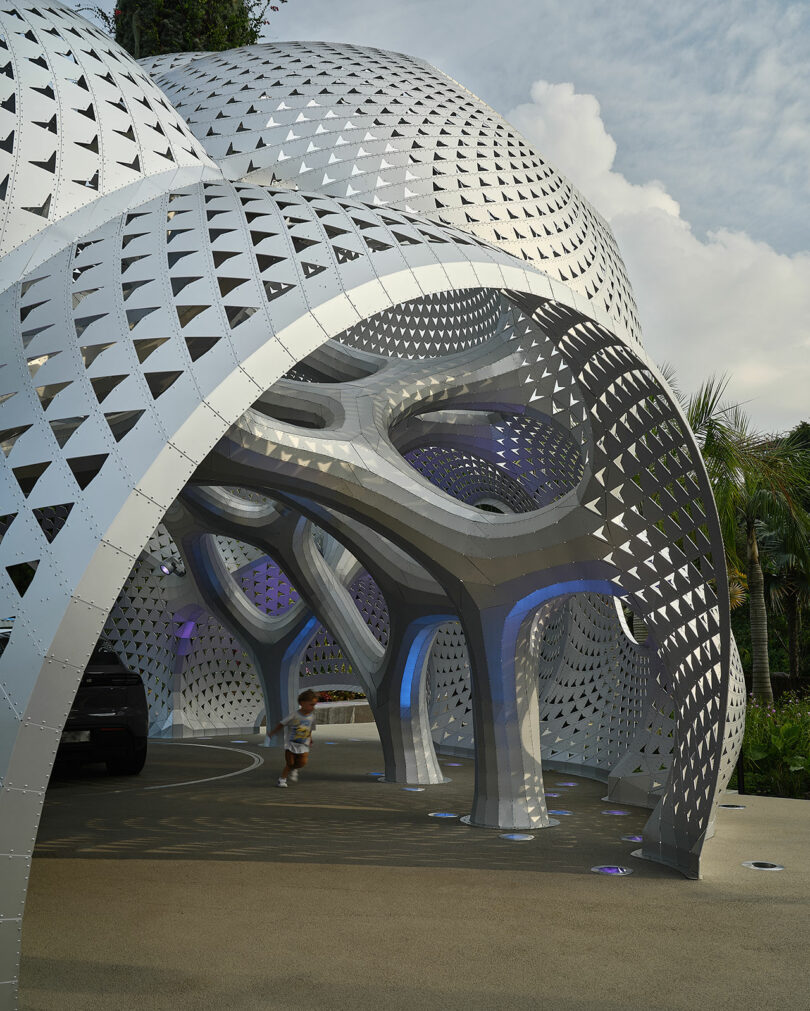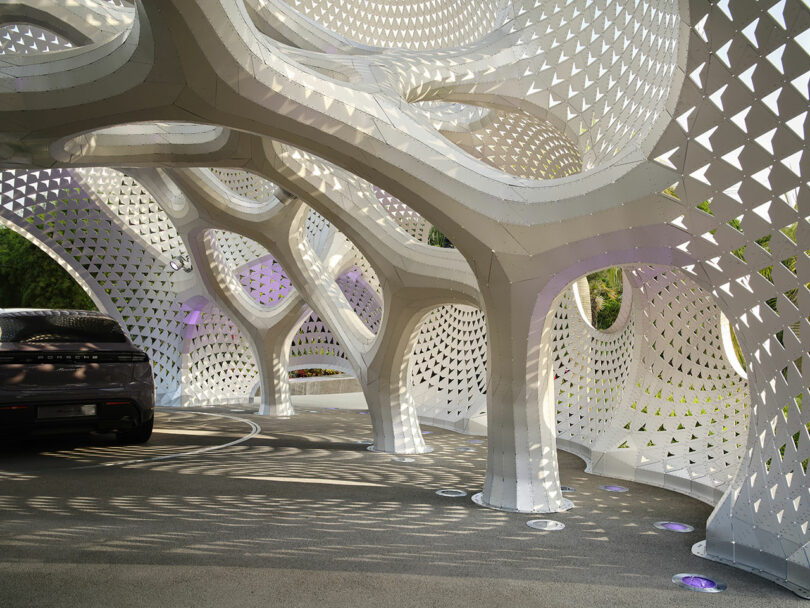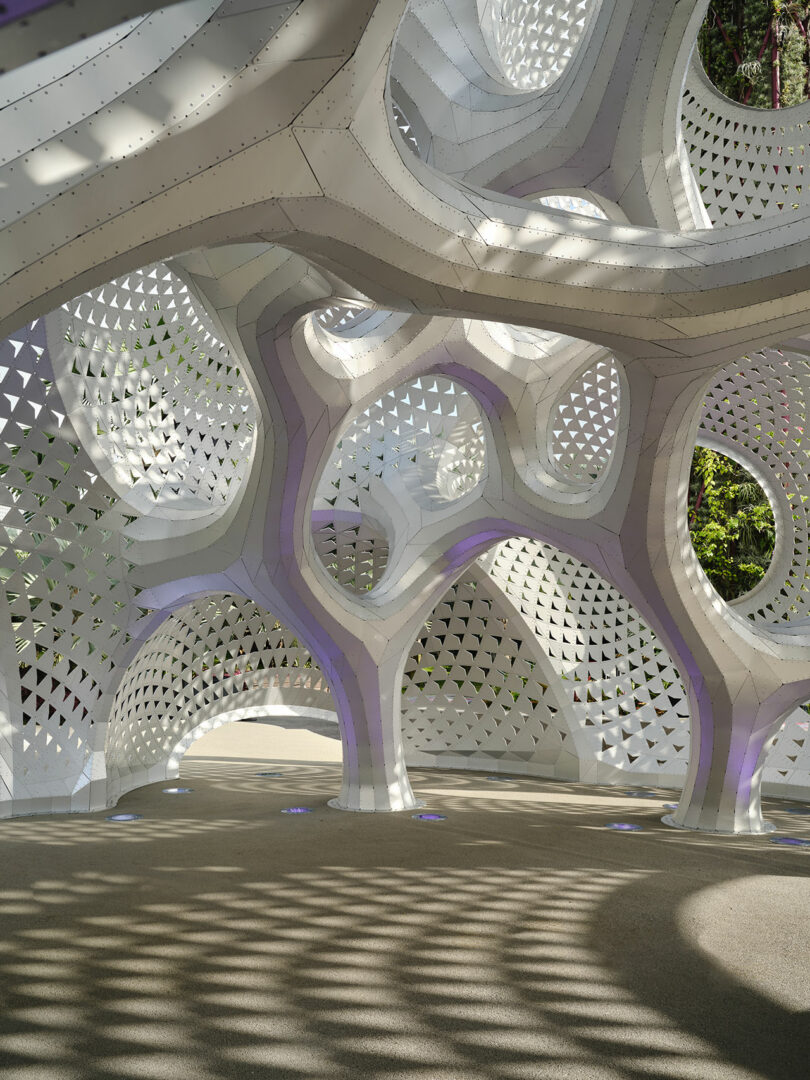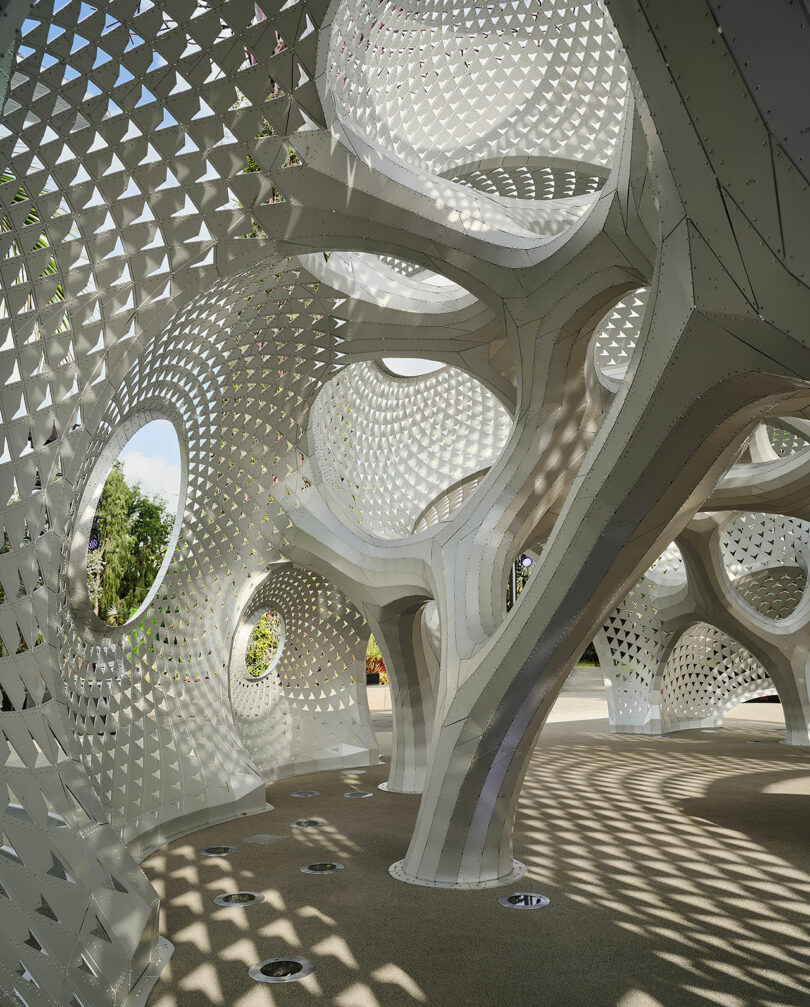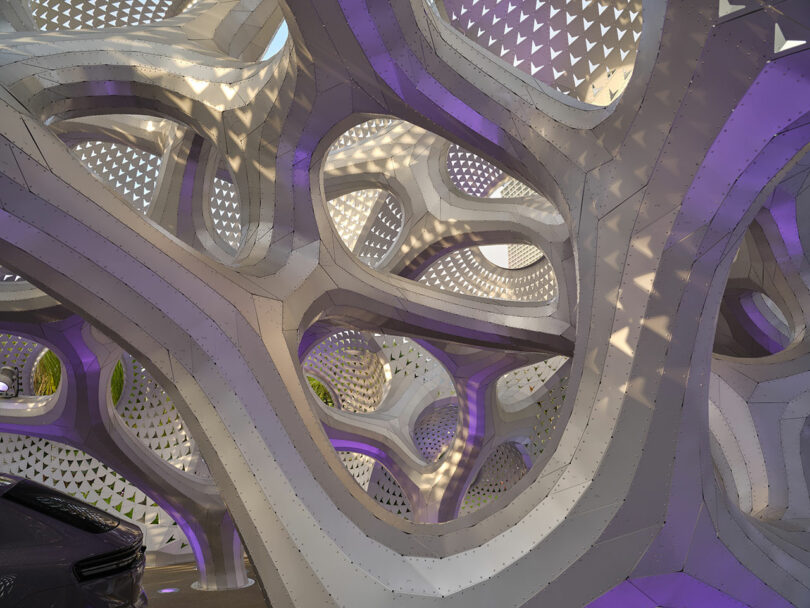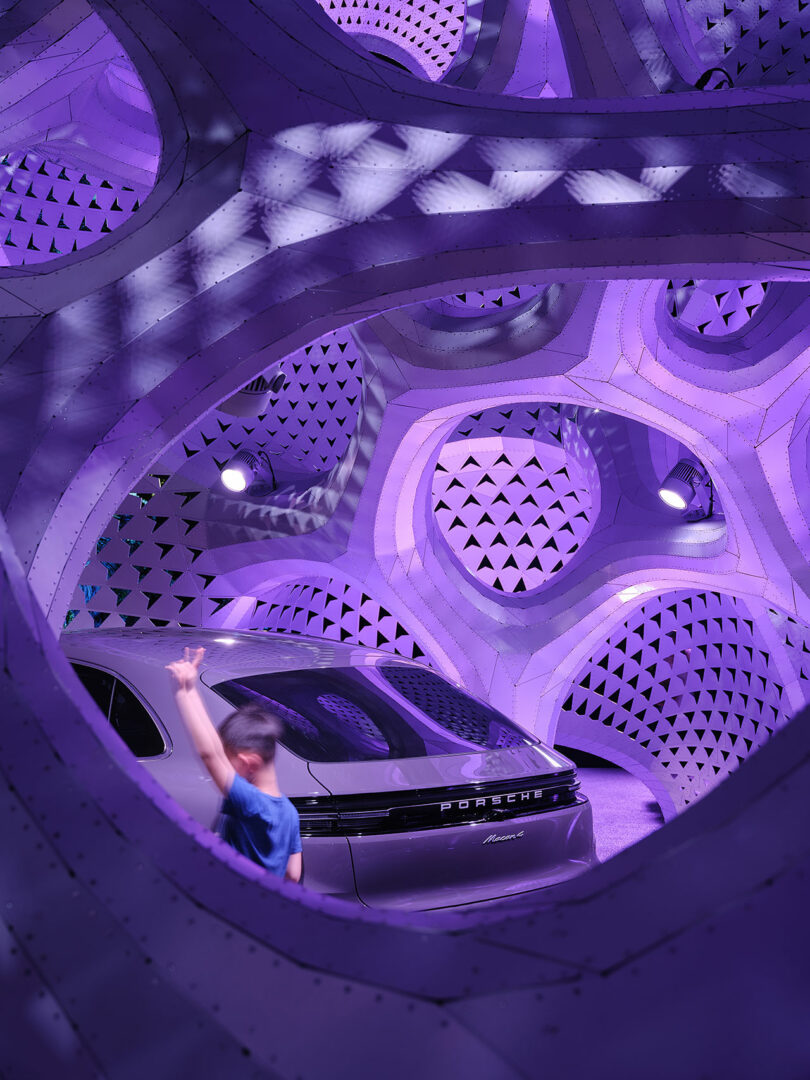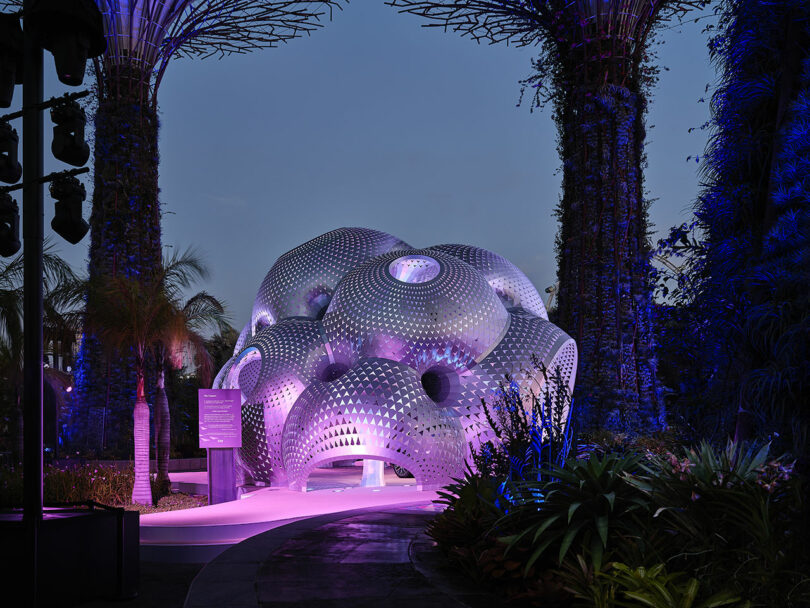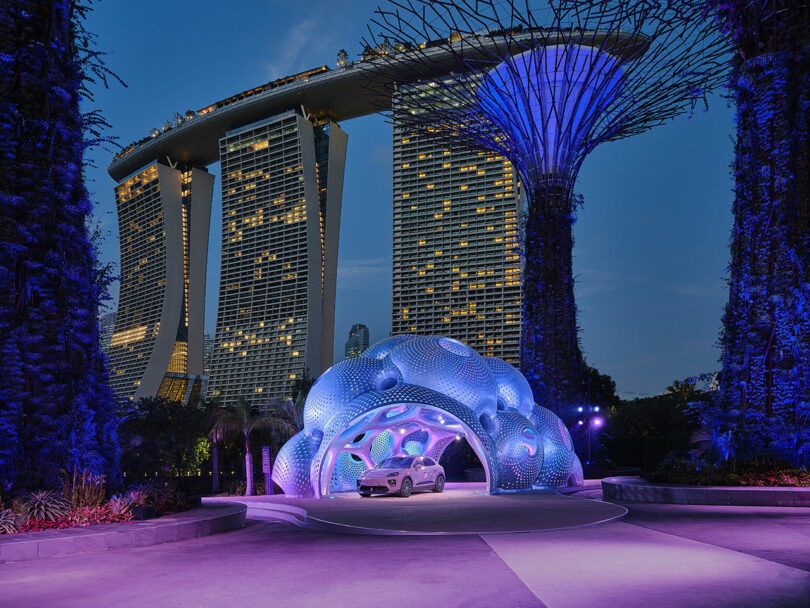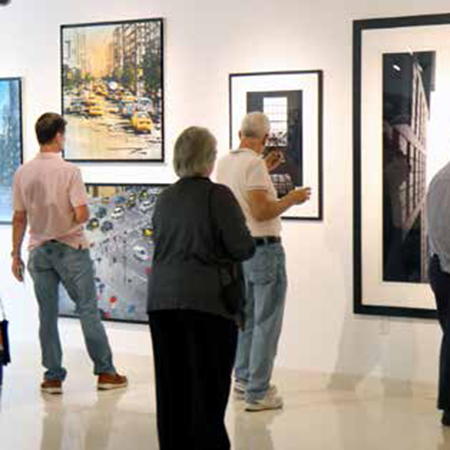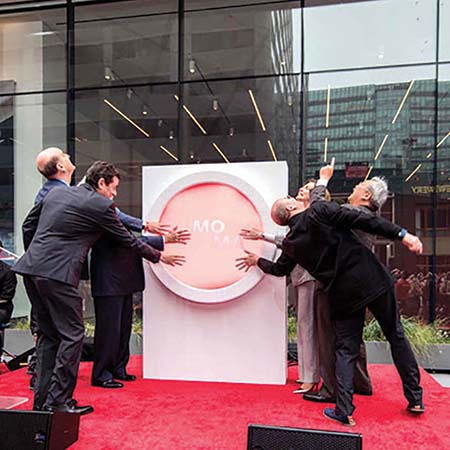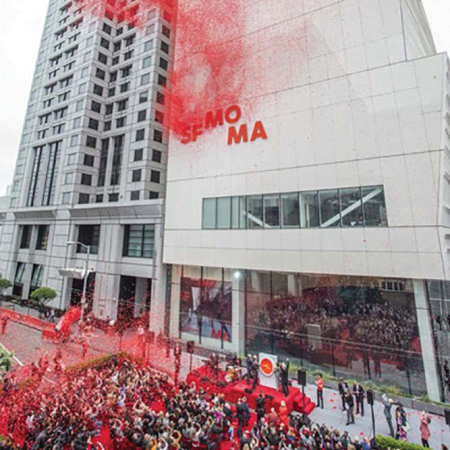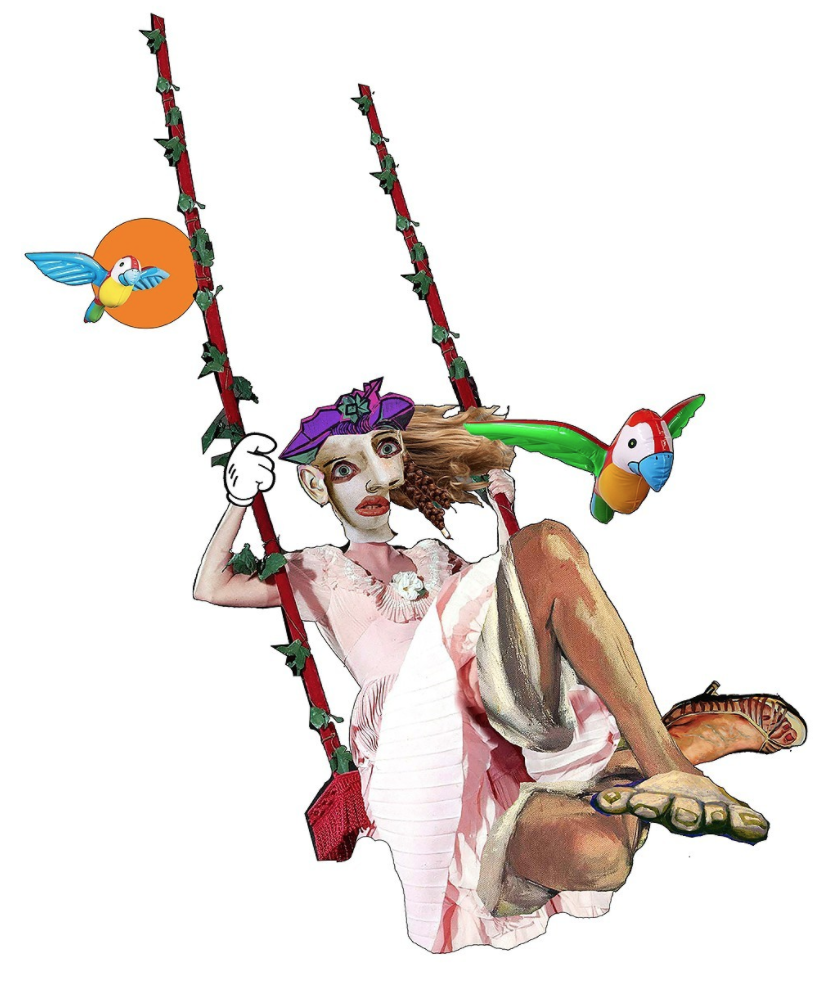
chukum & stone shape RA!’s residences in tulum
RA! completes hacienda wabi residences
The Hacienda Wabi Residences in Mexico, designed by RA! and promoted by Tulum-based developer Namus, is a housing complex that adopts a ruin-like aesthetic. Across its three stories and 15 apartments, the project’s staggered volumes and terraced design evoke the ancient settlements that once lined the area, while allowing nature to reclaim its space over time as it integrates with the surrounding jungle.
With a material palette of stone and Chukum finishes, the architects blur the boundaries between architecture and the environment, blending neutral tones with greenery cascading from planters framing the facade and softening it. Additionally, between the blocks and within them, the design ensures consistent airflow and natural light throughout.
all images courtesy of RA!
staggered volumes enclose fragmented courtyards
Inside, a fragmented courtyard forms a series of intimate spaces, providing access to each of the apartments and enhancing a sense of community. The winding pathways extend into semi-public spaces, including a pool and recreational areas. The team at RA! has tailored each floor with unique features: ground-level apartments open onto expansive gardens and private pools, while first-floor residences offer terraces and jacuzzis. The upper-level apartments include roof gardens, offering panoramic views of the treetops.
Each level features terraces and winding pathways that lead to the semi-public areas, including the pool and recreational spaces. Additionally, at each floor the ground level boasts expansive gardens and pools, the first level includes terraces and jacuzzi, while the second level features roof gardens with views extending to the treetops.

RA! completes Hacienda Wabi Residences
Locally sourced materials define the building’s natural aesthetic, with stone anchoring the base and Chukum plaster finishing the upper levels. This palette of neutral tones serves to highlight the surrounding jungle, allowing vegetation to merge with the walls and slabs, creating an architecture that appears as though it is both part of the landscape and receding into it.

the project’s staggered volumes and terraced design evoke ancient settlements
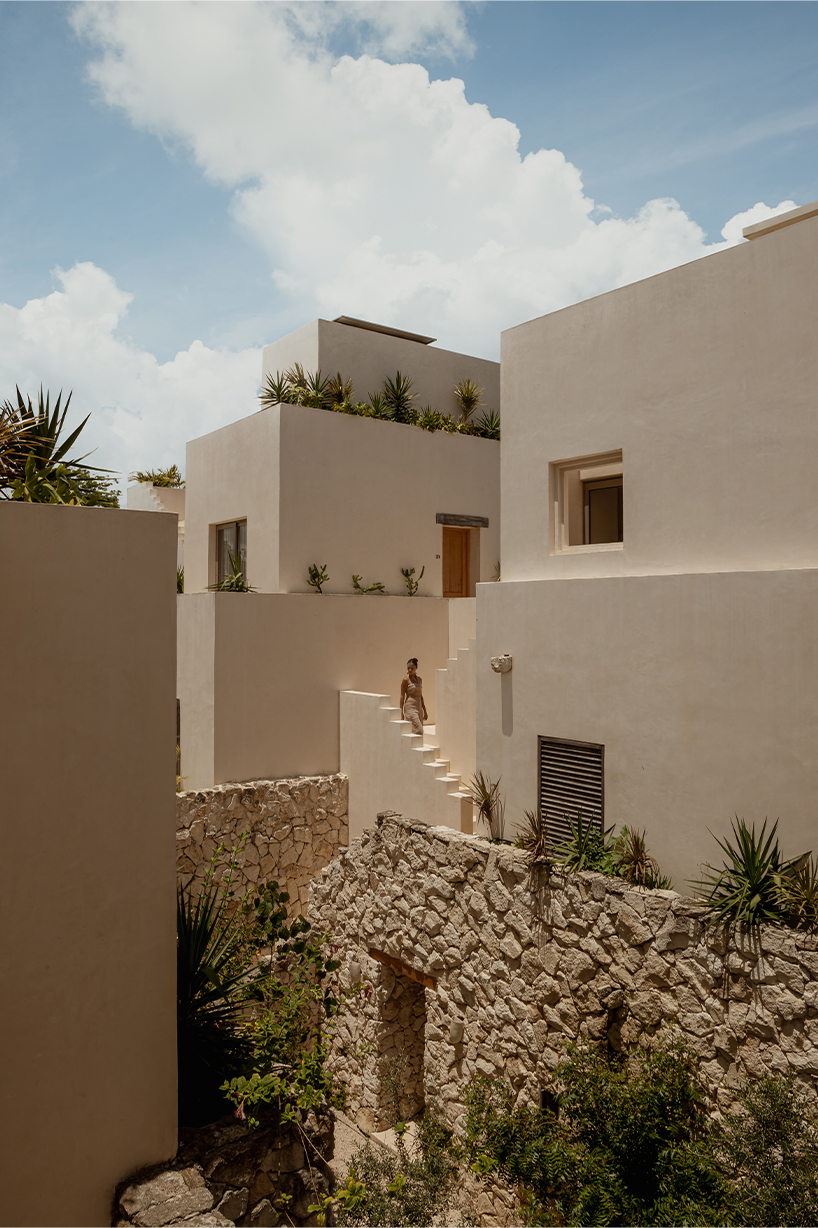
shaped with stone and Chukum finishes
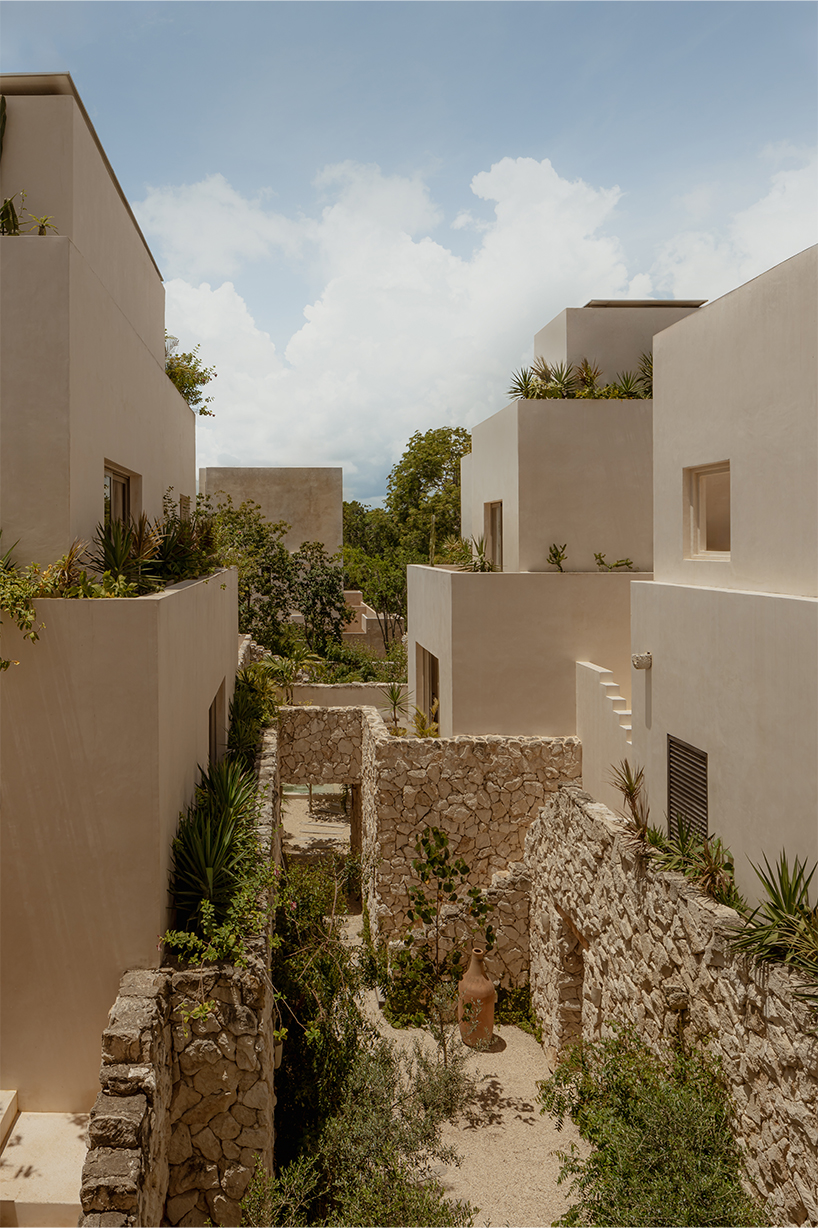
the architects blur boundaries between architecture and the environment
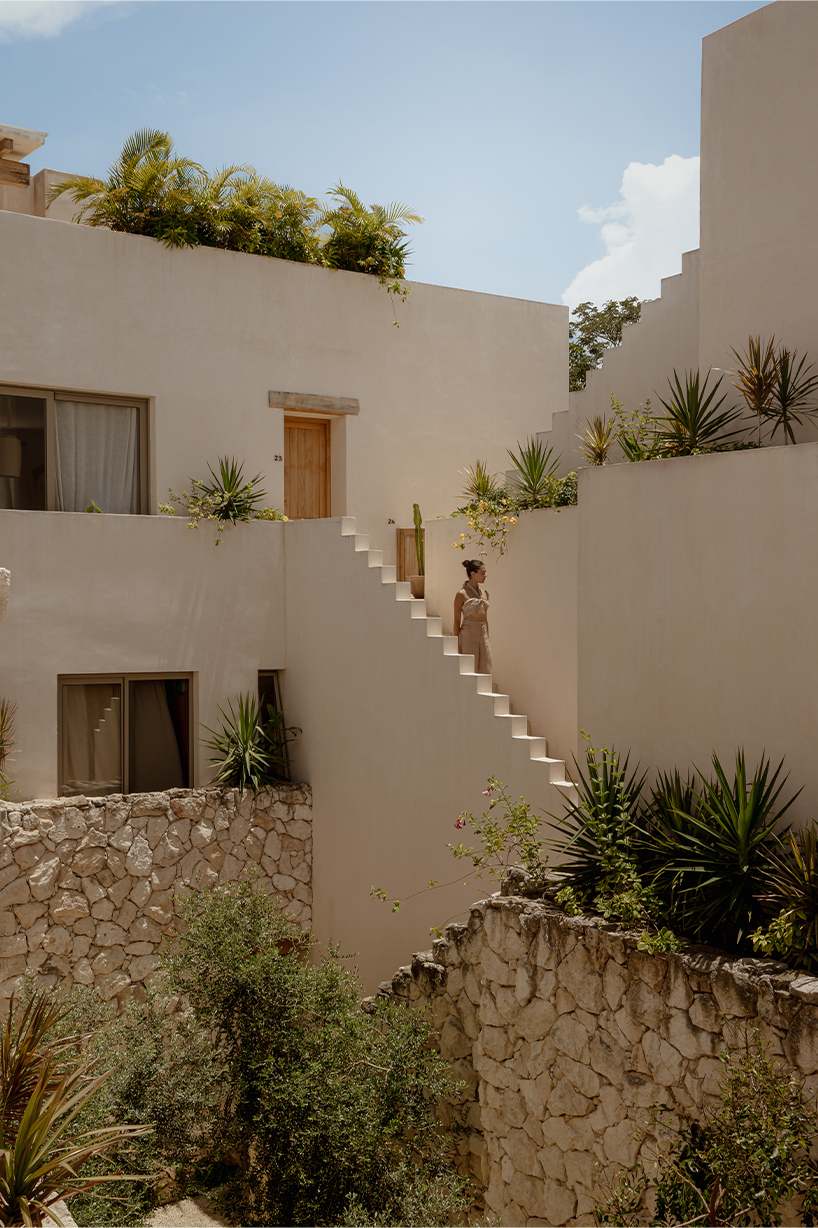
greenery cascades from planters framing the facade and softening it
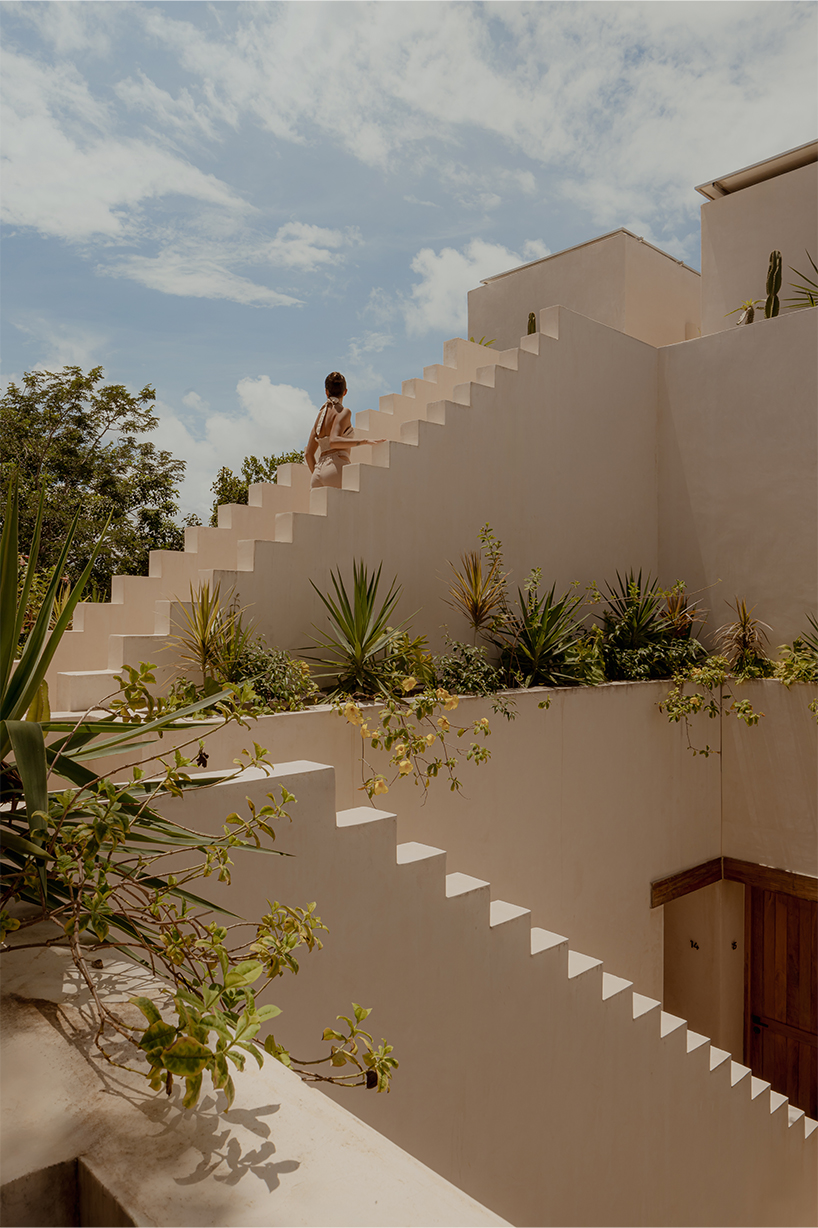
the winding pathways extend into semi-public spaces
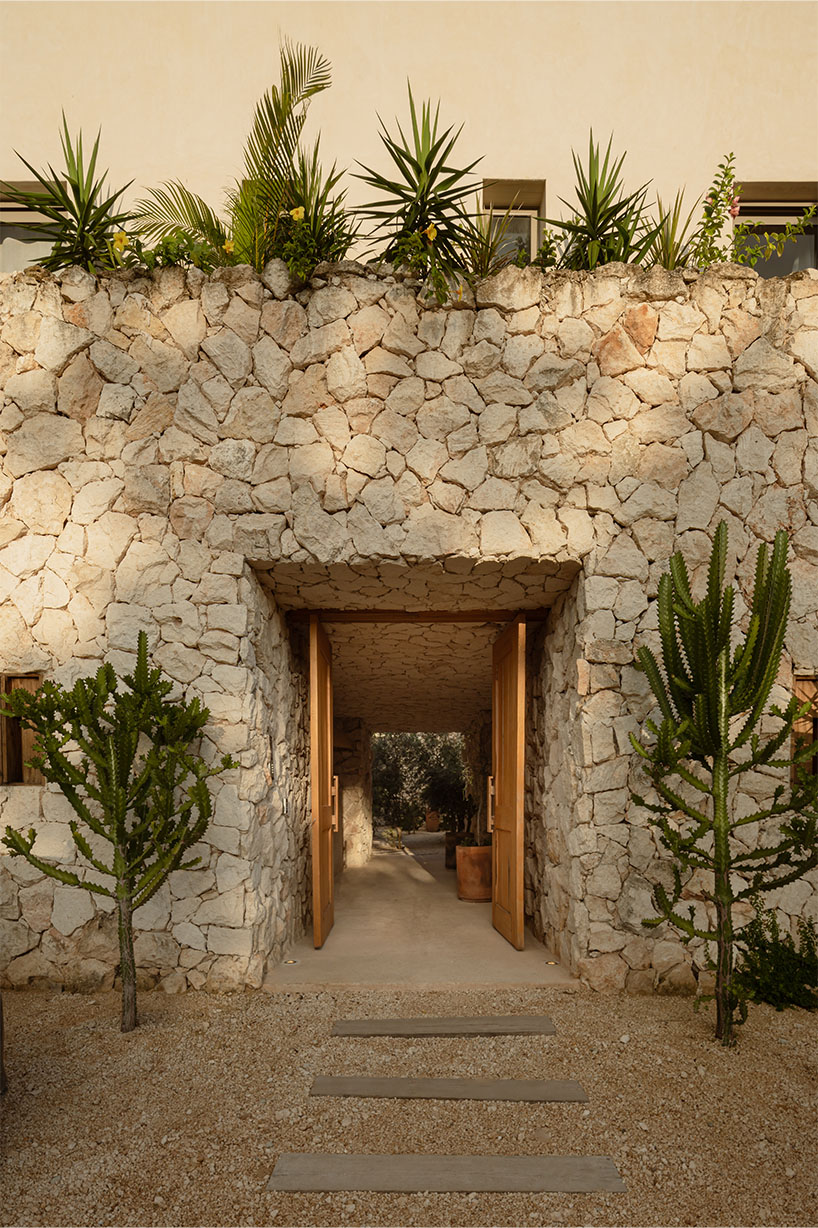
the design ensures consistent airflow and natural light throughout

a pool and recreational areas wind through
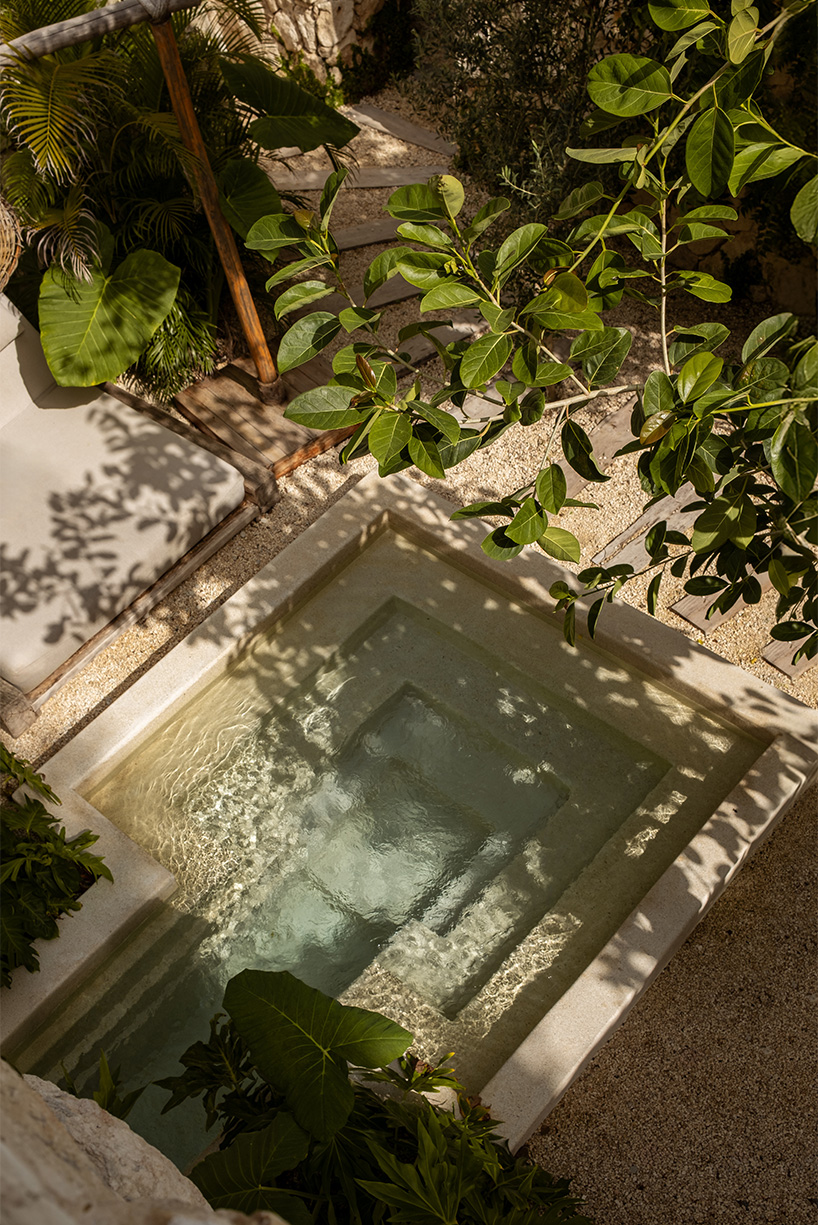
water elements and greenery are integrated across each level

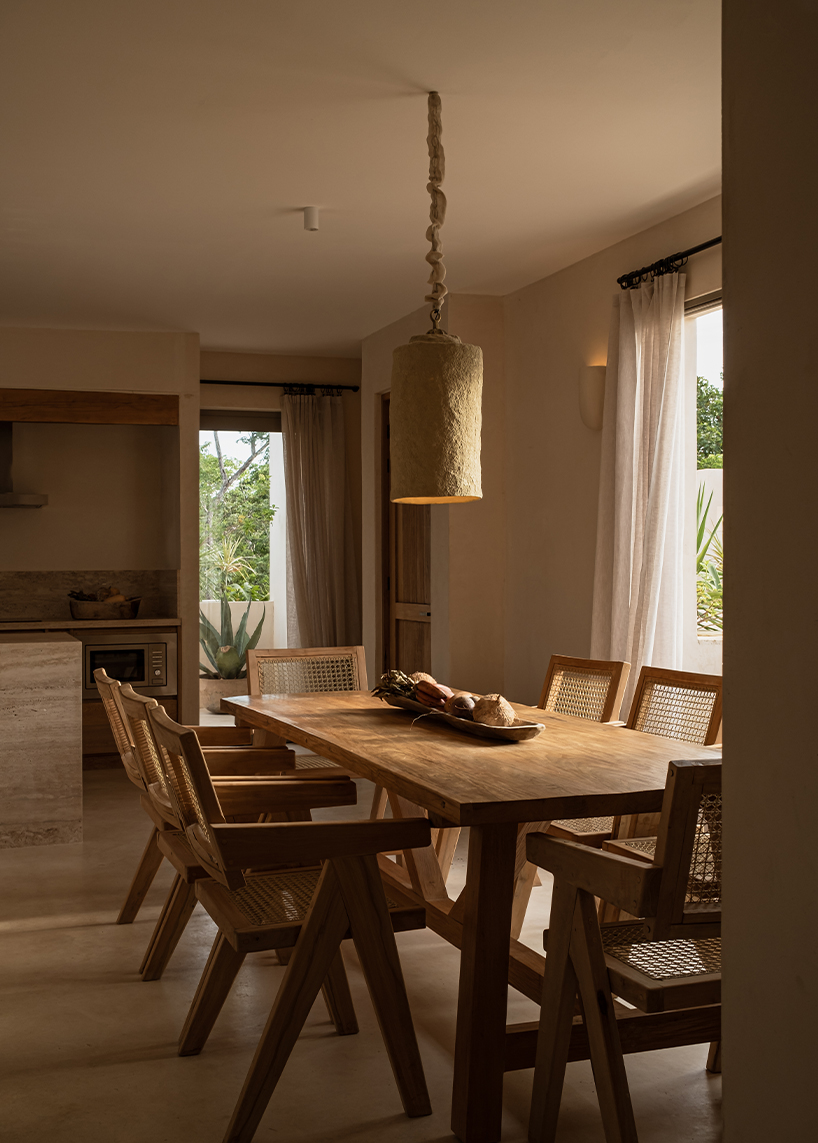
project info:
name: Hacienda Wabi Residences
architect: RA! | @ra_arquitectos
location: Tulum, Mexico
designboom has received this project from our DIY submissions feature, where we welcome our readers to submit their own work for publication. see more project submissions from our readers here.
edited by: ravail khan | designboom

Inside Danielle Brathwaite-Shirley’s interactive video game art at Berghain – Dazed
Inside Danielle Brathwaite-Shirley’s interactive video game art at Berghain Dazed
Source link

Even Northern California Has Issues With Censoring High School Plays
School district officials cancelled Santa Rosa High School’s production of Dog Sees God, which depicts the characters of the comic strip Peanuts in high school and deals with themes of bullying, gun violence, and homophobia. A privately-owned theater nearby hosted the production instead. – San Francisco Chronicle (MSN)
From the salon and the scarf dance … to silence: the music of Cécile Chaminade | Classical music
Cécile Chaminade is no longer a household name, or even a recognisable name, even in a time when female composers are being rediscovered and celebrated. I’ve loved her since I was a little boy visiting Hoylake for piano lessons with Heather Slade-Lipkin – her mother used to play Chaminade for me. It seems extraordinary now, but every time Joan would sit down at the piano for this opened-eyed little boy, devouring music like I was in a sweet shop, it was Chaminade’s Automne, or her Scarf Dance, or the tricky Toccata. One treat after another.
I’m playing a lot of Chaminade this season; or, more accurately, I’m playing a few pieces of hers many times – alongside three of the great, 30-minute masterpieces of 19th-century piano music: the Schumann Fantasie, and the B minor Sonatas of Liszt and Chopin. To those surprised by the juxtaposition, I think Chaminade sits very comfortably and proudly there, not because her elegant miniatures are comparable in scope and ambition to those three greatest keyboard works of the 19th century by three geniuses, but because she shared an important place with them in the most popular performance venue of the Romantic era: the salon.
Photograph: Hulton Archive/Getty Images
Salons have pretty much disappeared today (apart from those who try to resurrect the idea – a musical equivalent of jousting on the village green or taking a ride on a steam train) so we tend to forget that for most of the 19th century solo piano recitals in large public spaces were rare. It was the salon – a large room in a large private home to which music lovers would be invited – which was ubiquitous. Chopin’s whole creative life was fuelled by these opportunities for his music to be heard. His pieces were almost all dedicated to various countesses and rich patrons who would invite him to play for them; the intimate setting of a dozen people listening quietly in an elegant private room was his chosen space.
All the great 19th-century composers wrote some music specifically for amateurs to play at home. Apart from anything else, it was their main source of income. If you had the money and space for a china cabinet it’s likely you’d have a piano in the same room too. Pretty much everyone who had the time and leisure to read a book would have learned the piano as well. Especially women.
Enter Cécile Chaminade. She was born in 1857 into a musical family, receiving her first piano lessons from her mother. When she was 10 she was accepted for study at the Paris Conservatoire but her father forbade it, so she studied with various of its professors privately. Although all women of a certain class at the time were encouraged to play the piano at home, it was unusual for them to be allowed to pursue a career doing so. In fact, women were generally discouraged from travelling or dining alone, two activities which fill the lives of touring concert performers.
One of the keys to understanding the paucity of female composers until the 20th century is that composers generally wrote music for themselves to play, whether in public venues or the more private world of the salon. So if a performing career was not a possibility for a woman then neither was writing music. Chaminade is one of the few who were able to ride over this restriction, a witness to her determination and her popularity.
And Chaminade was exceptionally successful for a while. She played her music all over Europe, including for Queen Victoria who gave her the Jubilee medal in 1897; her Prélude for organ Op 78 was played at the monarch’s funeral. Most of her large output was written between the 1880s and 90s and she had an enormous international renown. Her Scarf Dance alone is said to have sold more than five million copies. In the US hundreds of women across the continent around the turn of the 20th century founded and joined Chaminade Clubs, from Yonkers, New York to Jackson, Mississippi – two of the many which exist to this day, and still present concerts.
Chaminade married a music publisher but they lived in a platonic relationship and separately, he in Marseille and she in Paris. He died in 1907 and she never remarried. It’s hard not to draw certain conclusions from this – a further indication of the restrictions of the age.
Then, soon after his death, and to the end of her life, more than 35 years later … silence. The composing dried up. The performances ceased. The accolades became a distant memory. Ironically, the postwar era of greater emancipation for women passed Chaminade by. It’s astonishing to realise that she died as late as 1944. Alone in Monte Carlo.
Where to place her in the rich period of French musical history that coincided with her life? She has something of the sweetness of Massenet, Delibes, Gounod and other Romantics; we hear the pianistic confidence of Saint-Saëns in the elegant glitter of her figuration; early Fauré’s shifting melancholy is present at times. Her music is at least as charming and lyrical as Debussy’s in his early Arabesques and Clair de Lune. Like Chopin she was a composer of meticulous craft; like Liszt she knew how to make the piano sparkle; and like Schumann there are many moments of tender poetry. She would have loved and played all three composers, and I have the sense she would have been delighted to take her place once more alongside them.
Chamber Music Society of Lincoln Center presents An Evening with Sir Stephen Hough at David Geffen Hall, New York City, on 24 November; Stephen Hough plays Chaminade, Chopin and Schumann at the Barbican, London, on 4 December.

THE 12 DAYS OF STRICTLY COME DANCING CHRISTMAS CELEBRITY LINE UP REVEALS
On the fourth day of Strictly Come Dancing Christmas Special 2024 celebrity reveals, my true love sent to me…… Harry Aikines-Aryeetey
The Strictly Come Dancing Christmas special is back! As the Ballroom is once again transformed into a magical winter wonderland, the fourth celebrity behind the all-star advent calendar doors this year has been revealed.
On Strictly: It Takes Two on BBC Two and iPlayer this evening, Harry Aikines-Aryeetey or ‘Nitro’ from Gladiators was announced as the fourth celebrity included in 2024’s Christmas line up, he will be paired with Strictly Come Dancing professional dancer Nancy Xu.
Expect festive cheer, jingle bells, mistletoe madness, bedazzling baubles and six celebrities all sleighing their way to Elstree in a bid to be crowned the Strictly Christmas Champion 2024.
Harry Aikines-Aryeetey or ‘Nitro’ is a Gladiator and Olympian.
In 2023 Harry was unveiled as ‘Nitro’ in the BBC One series of Gladiators. He is also a Team GB sprinter, Commonwealth and World gold medallist sprinter. Harry has competed at the highest level in the UK since his youth. After becoming the first athlete to win gold medals at both 100 and 200 metres at the World Youth Championships, he won 2005 BBC Young Sports Personality of the Year age 17.
Harry has gone on to win gold 4x in the men’s 100m European Championships and at the Commonwealth Games. His long list of achievements include: 2x Olympian, 3x European Champion, 2x Commonwealth Champion, 1x Commonwealth Silver Medallist, 1x European Bronze Medallist, 1x World Bronze Medallist, 1x British Champion, 2x World Youth Champion and 1x World Junior Champion.
Harry Aikines-Aryeetey says: “STRICTLY….ARE YOU READY?! Nitro’s blasting onto the Ballroom floor this Christmas! I’m swapping my trainers for dancing shoes, and trust me, I’m bringing the power, the energy and the moves! This December I’m gonna light up that dancefloor and crank the Christmas spirit all the way UP. Let’s do this!”
In the Strictly Come Dancing Christmas Special, produced by BBC Studios, each of the six couples will perform a festive fuelled routine in the hope of impressing the judges, Craig Revel Horwood, Motsi Mabuse, Anton Du Beke and Head Judge Shirley Ballas, and the voting studio audience. But who will emerge the Christmas star of the evening, and lift the sought after Christmas trophy?
The remaining Christmas line up will be announced on Strictly: It Takes Two in due course.

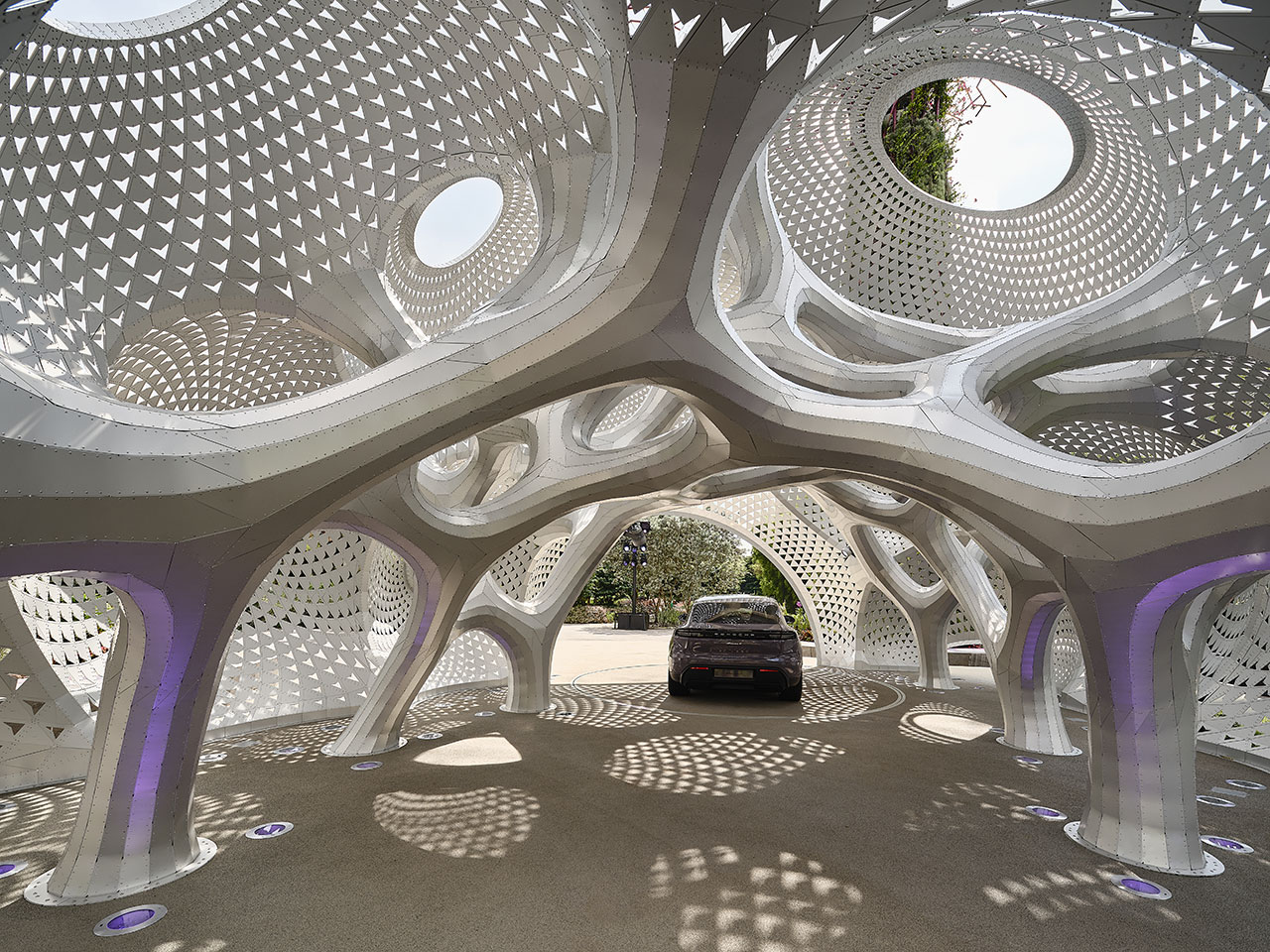
A Geometric Pavilion for Porsche Made of 6,380 Aluminum Strips
In an innovative fusion of art, design, and engineering, architect Marc Fornes / THEVERYMANY and Porsche created My Two Cars Garage, a geometric pavilion crafted to celebrate the debut of the all-electric Porsche Macan. Showcased during Singapore Art Week, this structure brings together cutting-edge design principles and the shared ethos of both collaborators – performance, precision, and aesthetic excellence.
The partnership between Porsche’s Michael Mauer and Marc Fornes, founder of THEVERYMANY, represents a blend of distinct yet complementary design philosophies. Mauer’s focus on clarity, functionality, and dynamic tension aligns seamlessly with Fornes’ signature techniques of Essentialism (“what you see is all there is, yet it’s so much more”), Specificity (“each part has a unique position and purpose”), and Frozen Tension (“where strength is derived from geometry, not material”). Together, their work transcends conventional design, creating a pavilion that serves not only as a structural marvel but also as an experiential art form.
At the heart of the design is its monocoque shell, an ultra-thin, self-supporting structure that eliminates the need for internal supports. Composed of 6,380 uniquely shaped aluminum strips and 202,203 rivets, the pavilion achieves both strength and fluidity through advanced computational design. Each piece interlocks perfectly to form a continuous double-curved surface, demonstrating how material efficiency and structural performance can coexist in a visually striking form.
One of the pavilion’s most dynamic features is its play with light. Inspired by the Porsche Macan’s intricate body detailing, thousands of perforations punctuate the aluminum skin. By day, sunlight filters through, creating ever-changing patterns of light and shadow. At night, the pavilion glows from within, evoking a sense of motion and adding a layer of spectacle to its architectural presence. This interplay invites visitors to engage with the space in different ways, depending on the time of day.
Prefabrication and modular assembly played a crucial role in the pavilion’s construction. Each component was crafted off-site, then pieced together on location with precision akin to assembling a high-performance vehicle. This method not only streamlined the construction process but also ensured a flawless, joint-free surface that mirrors the sleek design of Porsche’s vehicles.
Far more than a conventional display stand, “My Two Cars Garage” is an immersive environment designed to showcase the Macan’s innovative features. The pavilion’s flowing curves and tubular profiles frame the car as a central exhibit, while the open layout allows for dynamic interactions. Whether hosting one or two vehicles, the space becomes an integral part of the reveal experience, blurring the lines between architecture and performance art.
Positioned within Singapore’s Gardens by the Bay, this 13-meter-long by 7-meter-tall pavilion offers a glimpse into the future of automotive exhibitions. By integrating Porsche’s commitment to innovation with Marc Fornes’ expertise in computational design, “My Two Cars Garage” redefines how vehicles are experienced and celebrated.
For more information on the “My Two Cars Garage” or Marc Fornes / THEVERYMANY, visit theverymany.com. For more on Porsche, visit porsche.com.
Photography by THEVERYMANY and DoubleSpace.
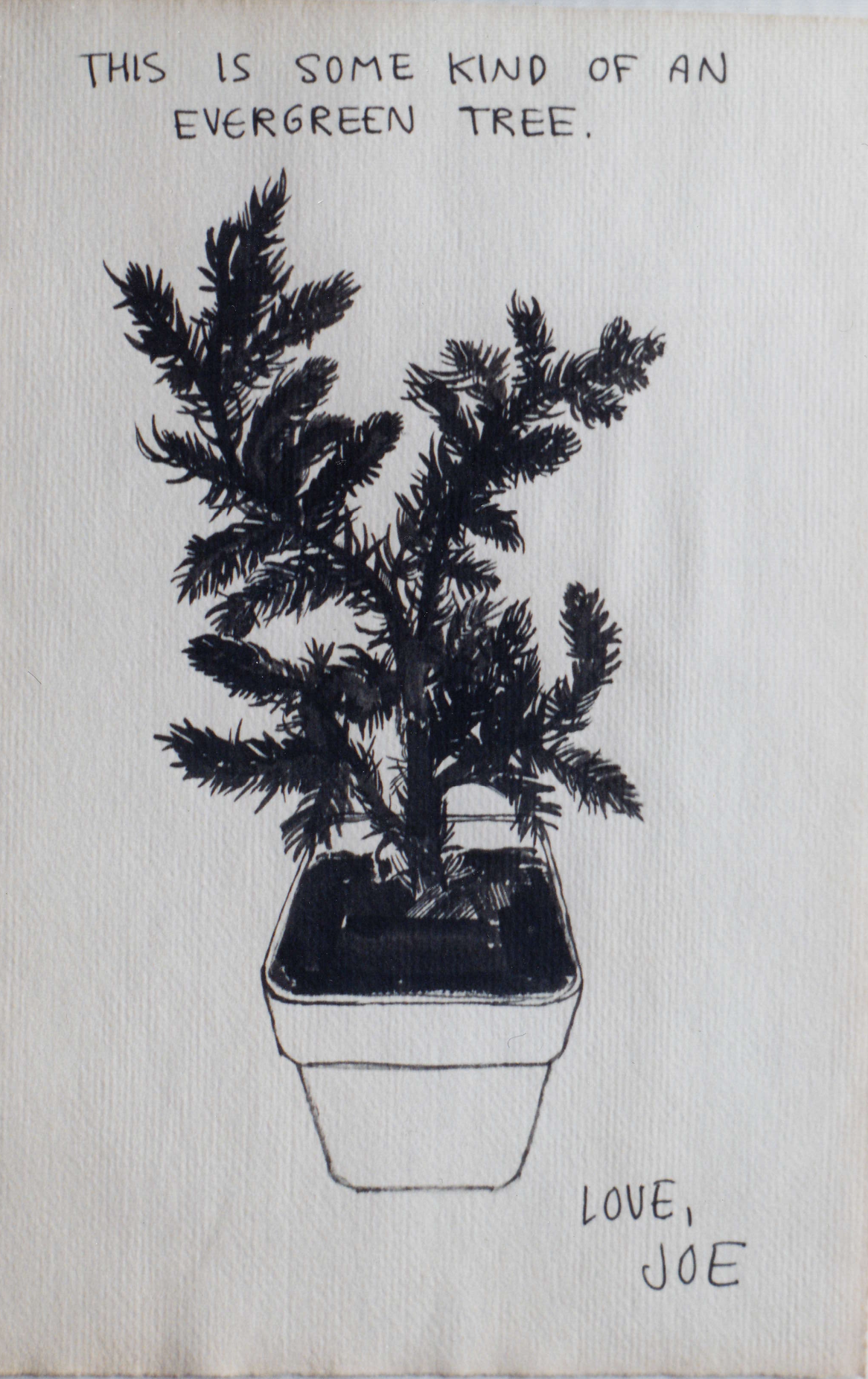
The Paris Review – Letters to James Schuyler
Excerpt from a Joe Brainard letter/booklet (“My New Plants”) to James Schuyler, December 1965, used by permission of The Estate of Joe Brainard and courtesy of the Mandeville Special Collections Library, University of California-San Diego.
The artist and writer Joe Brainard and the poet James Schuyler, both central figures in the New York School of poets and painters, met in 1964. The two soon became close friends and confidants. Brainard’s letters to Schuyler included here span the summer of 1964 through 1969 and were written while Brainard was moving from apartment to apartment in New York City and spending summers in Southampton, Long Island, and Calais, Vermont.
You can read an interview between James Schuyler and the critic and poet Peter Schjeldahl in the new Fall issue of The Paris Review, no. 249, here. Schuyler and Schjeldahl were nominally meeting to discuss the poet Frank O’Hara, but the interview became a wide-ranging conversation about poetry, New York in the fifties, and the cast of characters that surrounded them.
August 1968
Southampton, Long Island
Dear Jimmy,
Wouldn’t you know it? My rose petals didn’t work out. Some of them were not dried enough when I put them into those small Welch’s grape juice bottles and so they mildewed and turned green. So I had to throw them all away. Now, however, I have begun sand bottles. (At night) I don’t waste my time with such stuff in the daytime. At any rate—I have many colors of sand now (food coloring) all in many dishes all waiting for tonight (everyone is leaving tonight) when I’m going to see if it works. I have seen beautiful ones with very intricate designs but for my first one I will only do stripes. A nice size, those Welch’s bottles. I don’t, however care for the juice. When Pat and Wayne [Padgett] were here they would drink it for me (and loved it) but now I’ve nobody. I had (just had) several days of bad painting (sloppy) but today was very good. Today was (is) the most beautiful day I can ever remember: very sunny and very cool. And very quiet: Sunday. Many Sundays seem somehow odd to me, but today was just perfect. I do love it here. It just doesn’t make sense to go back to the city. Except for people. That’s where so many of the best people are, to me. The phone is ringing but I am in the studio. Kenward is out watching the annual tennis tournaments. John and Scott are at the beach. John and John Scott (I don’t mean John and Scott, I mean John and John) are driving back tonight to the city. John to visit his mother for her seventy-fifth anniversary. I am talking of John Ashbery and John Scott, John’s new colored boy friend. I was afraid that perhaps you would get confused with John Button and Scott Burton. John and Scott, you may not know, have broken up. As I understand it tho, it was a mutual split. I am drinking a rosé wine. It’s about five o’clock. Once everyone gets back together we are going to an opening around the corner of Leon … (can’t remember). He is a very old romantic-realist and slick with lots of birds and fish nets. You know his work I am sure. Very much like Bernard. Morris Golde says that Fairfield [Porter]’s paintings looked terrific at the Biennale. He was very impressed with the number of them: said there were “lots.” I did some yellow pansies this morning with Fairfield’s yellow-black for green. I think that I would have done it anyway (?) but I always think of it as Fairfield’s thing: yellow-black for green. Actually, I have seen it in very few paintings that I have seen it in: one being the one I have. I hate to see today go. Will write more tomorrow, or soon—
Well—they didn’t leave around six as planned but instead we all (except Kenward) went to a queer beach party with Safronis [Sephronus Mundy] and Jack (know them?) Safronis is from Sodus, like John A[shbery]. At any rate, it got 40 degrees and so we didn’t go to the beach but instead to some terrible interior decorator’s place. His name is Jack. I have never (no exaggeration) met anyone so disgusting in my entire life. Also there was a beautiful Indian boy who has been after me for several years now. I must admit that he turns me on terrifically. There is something fishy tho as he is so beautiful he could do a lot better than me. He is the Gerard Malanga type but he really has what it takes to be that type. He may know him he is quite notorious: Tosh Carrillo. At any rate, I have come to regard him as somewhat of the devil. Anyway, it was upsetting seeing him last night. (Temptation) I think you know me well enough to know that I am rather liberal. I’ve had many affairs since I started going with Kenward and I don’t feel one ounce of guilt. But this Tosh guy, there is really something dangerous about him. I hope you don’t mind my telling you this. It shook me up so much to see him again as, of course, I’m very attracted to him too. I hope by telling you about it I can forget for a while. So—today is another beautiful day: cool and hot. There is (like yesterday) a bit of autumn in the air and yet the sun is shining very brightly. It’s really the best of both seasons and I love it. This morning I got up at seven and picked three pansies and put them into three small bottles. One yellow pansy, one red-purple and yellow, and one solid blue-purple. I did three paintings of them (all three in each) and I am sure that at least one of them will look good in the morning. They are not so loose as before. More like summer before last. When I finish writing you I am going to read “Le Petomane” (about a French farter) And tonight I planned to do my first sand bottle.
Oh—the opening yesterday was paintings by Leonid. They weren’t very good but I rather admired a very details [sic] : details painted with one or two strokes of the brush. Like birds. Gore Vidal was there he looked quite young (35–40). Today is the twelfth. That means we have about two more weeks.
Right? Some of your house plants don’t look too great. I think that at first I watered them too much. They are not dead tho. So far there hasn’t been any serious damage done. A chunk of black linoleum in the laundry room
came up. Too much water was left at various times on the wooden tops in the new kitchen part: a few black streaks in the wood. I am watching it carefully now. I’m going to get this in the mail now. Do write soon. Summer is almost over and winter will not write much. One thing I forgot to tell you is that
I use your bike. I love riding it and I knew that you would not mind. Did I tell you that we are going to give a cocktail party for Jane [Freilicher] for her opening? Not Sunday (the opening), but Saturday before.
Very much love,
Joe
P.S. Did you see our names in the Sunday Times?
About painter poet collaborations by Peter S.
June 1969
Calais, Vermont
Dear Jimmy__
Last night (how nice it is to be writing to you again) I made a real strawberry short cake. I found the recipe in a “Family Circle.” I must say it was awfully good. And very easy. Egg, butter, milk, flour, baking powder, salt, and bake for fifteen minutes. Today is my second day in Vermont and I love being here. I especially love being here because I know I will be here for ten weeks. What to do? That’s what I am thinking about now. Mainly I just want to paint but also I want to get my manuscript together and do an issue of “C” Comics. This is too much to do in ten weeks but I imagine that I will try. If I had any sense in my head I would just paint and forget everything else but I enjoy “everything else” so much that I find this hard to do. So—as usual—I am torn between this or that or both. And—also I will pick both. It is still a bit cool up here. I continually (so far) wear a sweater. This morning (actually, it is still morning) I wrote a bit on a new thing I am writing called “I Remember.” It is just a collection of things I remember. Example:
“I remember the first time I got a letter that said ‘after five days return to’ on the envelope, and I thought that I was supposed to return the letter to the sender after I had kept it for five days.”
Stuff like that. Some funny, some (I hope) interesting, and, some downright boring. These, however, I will probably cut out. Unfortunately, I don’t have a very good memory, so it’s a bit like pulling teeth. I’ve been eating lots. I weighed in at 140 lbs. and I plan to arrive in N.Y.C. weighing at least 150. I plan to do this by eating lots and:
– 2 glasses of milk with Ovaltine everyday
– 1 big spoon of honey everyday
– eat lots of nuts at night
– vitamin B-12 pill every morning
I might even cut down on my smoking, but I doubt it. I am afraid that I don’t really care that much. In Tulsa I picked up some old school photographs of me. Enclosed is one of me in 1951. I also got some old newspaper photos and clippings of me which are very funny and very embarrassing. I’ll send them to you soon but I would like to have them back. Do keep this photo tho, if you want it. I am tempted to draw a line and write more tomorrow but actually I would enjoy this being your first summer letter so I’m going to go ahead and mail it. Do write.
Love, Joe
July 4, 1969
Calais, Vermont
Dear Jimmy__
You can’t know how nice, really, it was to get your letter. You write such nice letters even when you have nothing in particular to say. I am outside sunbathing again, and so are Anne [Waldman] and Lewis [Warsh]. Kenward is at the cabin he is writing, but surely nobody writes that much. Yesterday I sorted out all my oils, lined them up according to colors and stretched two canvases: 18″ x 24″. I thought I would start painting today but the sky is so clear and the sun is so hot, and actually, I didn’t (don’t) especially feel like it: painting. So—perhaps tomorrow. But I refuse to rush myself. No reason to except nervous habit. And nervous habit only produces works like I’ve done before. Which doesn’t have much to do with “painting,” as I see it. Or as I think I see it. (I don’t know what I’m talking about) Anne and Lewis are terrific people to live with. Lewis (so far) remains just as mysterious, but in a friendly sort of way. Anne is just as nervous as me, which makes me feel not so nervous. We smoke a lot of “you know what.” Talk a lot. Eat a lot. Play cards some. (Pounce and Concentration) Did you ever play that? Concentration. I like it. If you don’t know how to play it, let me know, and I will explain it in my next letter. It’s very simple really. We read a bit every night from a “Woman’s Circle” or a “Woman’s Household” which reminds me: I want to send you some issues. Will soon. I don’t know how much I weigh now as we discovered that the scales are irregular. So—I am just eating a lot, altho it is not as much fun without being able to see (read) my gains. Next time we go into town, however, we are going to get a new pair. This I have never understood. Why scales are called a “pair.” Today is the 4th of July. Happy 4th! We here aren’t going to celebrate much, as far as I know, except that for dinner we are having a Harrington’s ham. There is a 4th of July parade today in East Calais, but I said “no thanks” to that, which put a damper on going. Nothing is more frightening to me than “Elks and Masons” and their children, etc. Besides, I don’t enjoy being an outsider. Did I tell you of a funny dream I had several nights ago? I don’t think so. At any rate—John Ashbery and I were chatting on my parent’s front porch and John said to me, “I think your Mondrian period was even better than Mondrian.” Actually, I never had a “Mondrian period” but in my dream I remember recalling the paintings I had done. They were just like Mondrian except with off-beat colors. Like slip [sic] peach and plum purple. Olive green. Etc. At any rate, I was awfully flattered. Frank O’Hara and J. J. Mitchell were there too, but I won’t go into that. Other people’s dreams are never as interesting as it seems they ought to be: to other people. Your advice is good. I do eat lots of nuts and I have been trying to eat as much as possible. Actually, getting better looking will probably only get me into more trouble, and make life more complicated. If I was wise I wouldn’t even try—but—once again—pardon the oil on this letter. It does help tho. And a warm shower afterwards. I am enclosing for you some “Button Face” note cards I sent away for from the “Woman’s Circle.” They’re very funny I think. Kenward and I have both been sending away for lots of stuff in order to get mail. Kenward has got lots of seeds. I got a “forget-me-not” necklace (“like grandma used to make”) which is somewhat of a disappointment. Also I got some crocheted butterflies which I gave to Kenward in celebration of the 1st day of July. They will be sewn on to curtains. I also got some “music post cards.” (Post cards with music on them) And some stars you glue to the ceiling and they glow in the dark. Like decals. I put them up in Anne and Lewis’s room and they like them. Someday it would be nice to do a whole ceiling. Also available is a friendly moon. I just went in for a Pepsi. It is now one o’clock. This afternoon I think I will get out my Polaroid and see what happens. Maybe we can swap pictures. Like those clubs do. Of a less intimate nature of course. In your next letter to me would you please sign your name (your autograph) on a piece of white paper. I am beginning to put together my poet’s scrapbook and your autograph would be a big boom [sic] (Or a drawing?) I have drawings already by Ron and Ted and Frank and Kenward. Also I have many photos and clippings and wedding announcements, etc. It will be a nice book that will never end. The sun is really very hot today. Now I am sunning my back. This will be my first all-round tan since I was a kid. Kenward is doing pretty well too, tho his skin doesn’t tan as fast as mine. Obviously I am running out of talk. Will stop now. Do write again when you feel like it.
Love, Joe
P.S. Anne and Lewis city news:
John Giorno and Jasper Johns are back together again.
Pat and Ron leave for Tulsa this Monday for one week. Then three weeks traveling around California.
John Wieners’ parents had him committed but a plan is being worked out to get him out.
Dial-A-Poem will be continued next year from the “St. Marks Church.”
Bill Berkson has moved. His new address is 107 E. 10th St.
D. D. Ryan has been promoted to assistant producer, and now, is actually in the movie.
That’s about it.
(again) Love, Joe
Mid-July 1969
Calais, Vermont
Dear Jimmy:
Flowers not going too well. All the different greens (which seem to change from moment to moment) are driving me up the wall. Also—there is a red-purple I just can’t get. Also my wild flowers are too curvy (Art-Nouveau) and I can’t seem to straighten them out. A line (stem) like this [draws a smooth upward curve] always seems to end up like this [draws an upward curve with kinks in it] and, when I try to straighten them out, they seem flat (life-less) not that I have anything against curves. But my flowers are practically flying out of their bottles, off the canvas, to god only knows where. I never have liked El Greco much. Except for one pope. So—I am not painting today. A break. I am sunning. Today is a beautiful clear day, very blue, with not a cloud in sight. The sun is hot. It is about one o’clock. Kenward is coming back from the city around seven tonight. The whole back of me is peeling, as one day it got too much sun. So—I will have to start all over, little by little, as for several years it has been totally neglected. (Sun-wise) Not much is new. Except that the day lilies are out. The orange ones. In full bloom. All over. There are many more of them this year. And the milkweeds. They are everywhere. Which is O.K. with me. I like them. I read somewhere the other day that during the war they were used for lining coats. (Their fibers, or something, make good insulation.) Army coats. For very cold weather. It also said that their very small top leaves (the top two or three), when cooked taste like asparagus. I would say they taste more like spinach. And not very good spinach at that. Perhaps we didn’t cook them right yesterday. After oil painting all morning (I got up at 5:30!) I picked some grass and did lots of green ink and brush drawings of it. I am now cutting the grass out (with an X-Acto knife) and then I am going to put it all together, in layers, to make a solid patch of grass. (11″ x 14″) So far I have cut out two layers. It is quite delicate cutting and I have a big blister to prove it. (Delicate, but hard) It will be very pretty I know. It can’t miss. And it’s a good thing to do (cutting out grass) around four or five o’clock when your head is tired but you are still sort of wound up. Just before a drink. I plan to do a fern one too. If we ever get to Burlington (to get some more X-Acto blades). As it is rather intricate cutting one blade will not cut very much so finely. I could always send to the city for some. (Mail!) Now I am not sure what to do about my two oil paintings of two wild flowers arrangements. The actual flowers are gone now so I have a choice of “faking it” (which I am very good at) or forgetting them and start some new ones. I think I will do this (start some new paintings) as, if I’m going to fake it, I may as well wait until I get back to the city. Meanwhile, perhaps I can do some direct, here. I must keep reminding myself that this is not my purpose, now, to “produce good paintings” (rather to learn) about oils. About how things look. About color. Etc. Color is a real problem. I don’t know the tube colors so well as I know tempera jar colors. So I have to think. And thinking isn’t much good when it comes to color. From tempera painting I remember the best “right” colors more or less just happen. Do you know anything about toe nails? My right foot is bigger than my left foot and cowboy boots are not very good for you, but I wore them a lot last year anyway. The result is that my big toe nail is so squeezed together and it is very thick and sort of yellow. My idea is to file the entire nail (the top half, actually) down to how thin it ought to be. Do you think this would hurt? (The nail) That is to say, is a nail the same all the way through? I would hate to file away the surface of the nail and find something different underneath it. There are several health books here, all with toe nail sections, but you know how health books are. (No real information) They are cutting down some trees off to the left. (If one was entering the front door) So for days there has been constant sawing. What we hear, I guess, is like an echo. Like a car trying to start. One does get used to it tho. Mrs. [Louise Andrews] Kent’s son owns that land. Aside from getting lots of wood, it is supposed to be good for the land. (Thinning it) So Kenward said. So Ralph [Weeks] told Kenward Mrs. Kent is in the hospital. I don’t know if you know her well enough that you would want to send a card or not. I don’t know exactly what is wrong with her except that, really, she is very old. It is the Montpelier Hospital. The one Ron was in. Pat and Ron are either in Tulsa, or on their way to California. Or perhaps in California. It’s hard to keep track of the date up here. And I don’t know their plans anyway. (Date-wise) Sometime in August they will come up here next to visit some. Unless, by next year we are not very close. Which is possible. Actually we weren’t terribly close this year. Old friends don’t want you to change. And, of course, it works both ways. Or, perhaps it is just harder, around old friends, to try to change. At any rate—sometimes, around Pat and Ron (and especially Ted) I don’t feel like myself. (1969-wise) Of course, there are compensations. Like—I always feel very comfortable around Pat and Ron. And that’s NICE. I’m going to sign off before I find myself with a whole new page to fill. There has been no mail for two days as Kenward has been away. So—if I have received a letter from you and not mentioned it, this is why I haven’t received it. Do write.
Love, Joe
P.S. Actually, Ron is trying. Two times last year I got a kiss. And after seeing the Royal Ballet he said that Nureyev has a rear end like mine. For some reason I was very touched by that. (Wish it were true).
From Love, Joe: The Collected Letters of Joe Brainard, edited by Daniel Kane, to be published by Columbia University Press this November.
Joe Brainard (1942–1994) was raised in Tulsa, Oklahoma, and moved to New York City in 1960. He was a prolific writer and artist across many media, including paintings, collages, assemblages, and comic-strip collaborations with poets. His I Remember has been translated into fifteen languages, and his artworks are in the collections of the Metropolitan Museum of Art, the Museum of Modern Art, the Whitney Museum, and many others. He died of AIDS-related pneumonia.
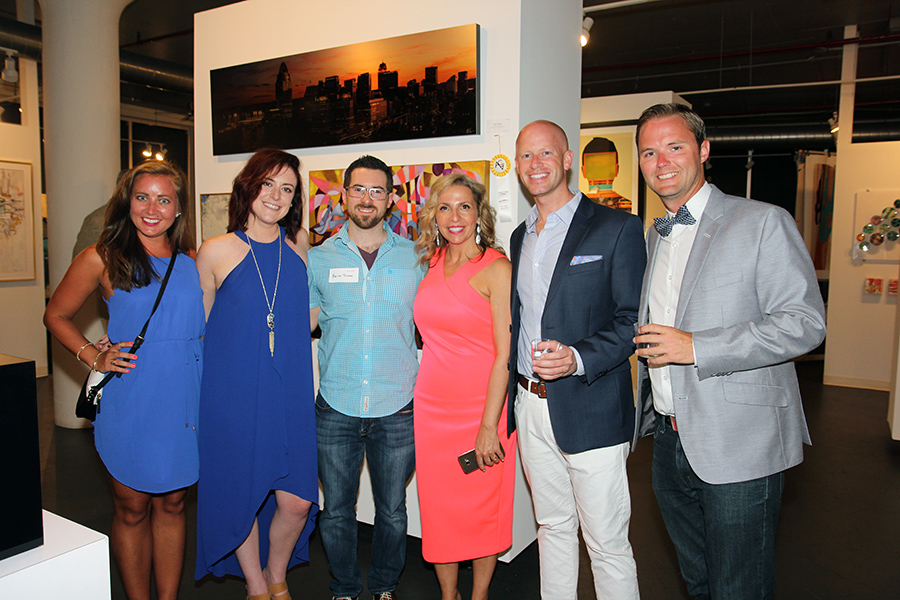
Art Scene 2016 – Art Business News
2016’s Hottest Art Events and Organizations from Around the Globe
ANNE & MARK’S ART PARTY
San Jose, California
Billed as an “Occasional and Irrational San Jose Arts Fest,” Anne & Mark’s Art Party is an amazing art happening. The most recent unveiling was this past September, but no matter when it happens, the Art Party is an integral part of the Northern California art scene. It’s been described as “Mad Max meets Moulin Rouge” and “Burning Man meets Venice Biennale.” You’ve got to experience it to understand it. That is, whenever it comes around again.
ART DESIGN CONSULTANTS’
“ART COMES ALIVE” AWARDS
Cincinnati, Ohio
Art Design Consultants proudly sponsors Art Comes Alive (ACA), an annual fine art contest and exhibit that awards the brightest and best artists working in North America in a variety of categories. The awards provide a great opportunity for artists to be acknowledged for their talents, to gain exposure, and to win purchase awards and gallery contracts.
ARTBLEND
Fort Lauderdale, Florida
Artblend takes a new approach to every artist who comes into their gallery or who is featured at one of the many art shows where the gallery exhibits. Artblend is a full-service, art-related business based in Fort Lauderdale, giving emerging, mid-career, and established artists the marketing expertise that they need to build their business.
CONTEMPORARY ART
PROJECTS USA
Miami, Florida
Headquartered in Miami, Contemporary Art Projects USA is dedicated to nurturing new contemporary art by providing exhibition opportunities and resources for emerging artists and curators. Their mission is to promote art appreciation within the international community and to generate resources that support artists’ creative endeavors. From biennials and gala auctions to exhibitions and major international art shows, they are always on the scene.
GALLERY EDEL
Osaka, Japan
Gallery Edel is committed to a completely new interpretation and perspective on exhibiting the most significant and important art trends in Japanese contemporary art and international contemporary art. The foremost objective of Gallery Edel is to enhance the experience of both artmaking and art appreciation by embracing the culture of art worldwide. The gallery’s approach is exemplified by their 2016 exhibitions at Art Santa Fe and Red Dot Miami, where they are showing the work of recent Japanese art phenomenon Yayoi Kusama.
MARC STRAUS GALLERY
New York, New York
Marc Straus is one of New York’s leading contemporary art galleries, located on theLower East Side of Manhattan. The gallery identifies and fosters some of the best international talent, representing 17 artists from 13 different countries, most of whom have not been shown in the U.S. before. Additionally, the gallery has taken a position of showing older artists who have not for decades, or in some cases ever, been looked at in the proper light. Their show and exhibition of artist Todd Murphy exemplifies the impact of that position and vision.
SFMOMA
San Francisco, California
After years of great anticipation and with a blizzard of red confetti, one of the most anticipated openings and art events of the year came to fruition. The San Francisco Museum of Modern Art (SFMOMA) opened its doors to the public in May 2016, and changed the look and feel of exhibiting modern contemporary art for years to come. Attended by dignitaries, renowned artists, and members of the art community far and wide, the festivities included a gala celebration and a grand public opening.
TEFAF
New York, New York
Founded by art dealers in 1988 and run as a non-profit foundation, TEFAF has a proud history of showcasing masterpieces in every category of art and design – from antiques, Old Masters, and Haute Joaillerie to contemporary painting, works on paper, and 20th century design. It presents two fairs in New York: TEFAF New York Fall and TEFAF New York Spring, held in October and May, respectively.

When Statues Become Fathers: Creative Street Art on Equal Parenting
What happens when male statues become fathers for a day? A creative campaign in Sweden is challenging traditional norms about parenting roles.
Imagine a bronze statue of a stoic leader, now wearing a bright pink baby sling with a doll nestled inside. On International Men’s Day, November 19th, male statues across Sweden were adorned with baby slings and carriers as part of a unique campaign to spotlight unequal parenting responsibilities.
Traditionally representing power, labor, or other masculine attributes, these statues were reimagined to symbolize fathers as caregivers. The campaign, organized by the think tank Arena Idé, is part of the #kvantitetstidspappan initiative, aimed at encouraging fathers to spend more time with their children and urging employers to play a larger role in enabling this.

Despite Sweden’s globally recognized parental leave policies, significant disparities remain. Swedish fathers take only 30.9% of parental leave days and 38% of sick leave to care for children.
A recent Novus survey, conducted in collaboration with Make Equal, further reveals that expectations around parental leave remain unequal in Swedish workplaces. Through this campaign, Arena Idé hopes to challenge these norms and has proposed an employer bonus for workplaces that encourage an equal division of parental leave.
The statues involved in the campaign—such as Standing Man in Umeå, Det svenska tungsinnet in Malmö, and Hjalmar Branting in Stockholm—were decorated with dolls in baby slings and carriers.

This created a contrast between the statues’ traditional symbolism and the modern role of engaged fathers.
The initiative draws inspiration from the UK-based group The Dad Shift, which earlier this year launched a similar campaign highlighting gaps in Britain’s parental leave policies.
Vilgot Österlund, a statistician at Arena Idé, emphasizes the importance of changing workplace norms: “When discussing gender equality in workplaces, the focus is often on women and the negative consequences of inequality for them. But here, we see that men are also losing out on something invaluable—time with their children. Through the statue campaign, the new statistics, and our proposals, we hope to make this clearer!”

Read more about the campaign and the proposed reforms in the original article by Arena Idé: Link to the original article.





More statues: 30 Sculptures You (probably) Didn’t Know Existed

How do you perceive the use of public art to challenge parenting norms? Can such initiatives drive societal change? We invite you to share your perspectives in the comments below.
.fb-background-color {
background: #ffffff !important;
}
.fb_iframe_widget_fluid_desktop iframe {
width: 100% !important;
}

Audio Arts sound art magazine, aural archive of artists’ voices and sound art
As I tidy and throw away redundant materials from the Slide Library here at Cardiff Metropolitan University prior to a move to another campus it really helps when I know that what is going into the bin is not therefore lost to history. the old audio arts cassette has been binned but every volume from that magazine of sounds and sound art is available still! On the Tate website here.
Explore and listen to this innovative audio cassette-magazine featuring exclusive contributions from more than 900 individual artists
including Joseph
Beuys, Ian
Breakwell, Tracey
Emin and Andy Warhol. Audio Arts was established by Bill Furlong in 1972 and includes soundworks, interviews and coverage of exhibitions. You will find all 24 volumes from Audio Arts published between 1973 and 2006
including the Audio Arts supplements which focus on particular themes and
individuals, from the state of British art in the late 1970s to a feature on
Damien Hirst in 2003.
Read more here
Pimpinero: Blood and Oil review – road thrills with South American border smugglers | Movies
It’s called the “caravan of death” – cars speeding, Mad Max-style, across the desert on the border between Colombia and Venezuela, loaded up with jerry cans of petrol. Colombian film-maker Andrés Baiz, who previously worked on episodes of Netflix’s Narcos, has directed this crime saga inspired by the real-life “pimpineros”, smugglers who exploited dirt-cheap petrol during the presidency of Hugo Chávez. But strangely, this film keeps to the speed limit; it’s like Formula One with enhanced health and safety, slow-paced and a little low on adrenaline.
The year is 2012, when sixpence bought a gallon of petrol in oil-rich Venezuela, leading to a boom in cross-border smuggling to Colombia. A trio of brothers, the Estradas, have been muscled out of the smuggling business by ruthless Don Carmelo (David Noreña); he’s a nothing-special villain with his wolfish grin and novelty shirts. Moises, the eldest of the Estrada clan (played by Colombian rock star Juanes), retires to open an Italian restaurant. Ulises (Alberto Guerra) joins Don Carmelo’s mob; like Fredo in The Godfather, he’s the undisciplined one. Little brother Juan (Alejandro Speitzer) decides to go it alone, smuggling with his girlfriend Diana (Laura Osma).
The movie starts off on a fun high, with beat-up old cars racing across the sun-bleached desert. But the action gets toned down in favour of sentimental melodrama as the story switches to Juan and Diana’s startup smuggling business. In this macho world the film sets up Diana as the hero, a woman among men. But still, the script can’t resist treating her like a little lady, with a plotline as conventional as it gets, in which she is trafficked into sex work. It’s a film in need of sharper writing.
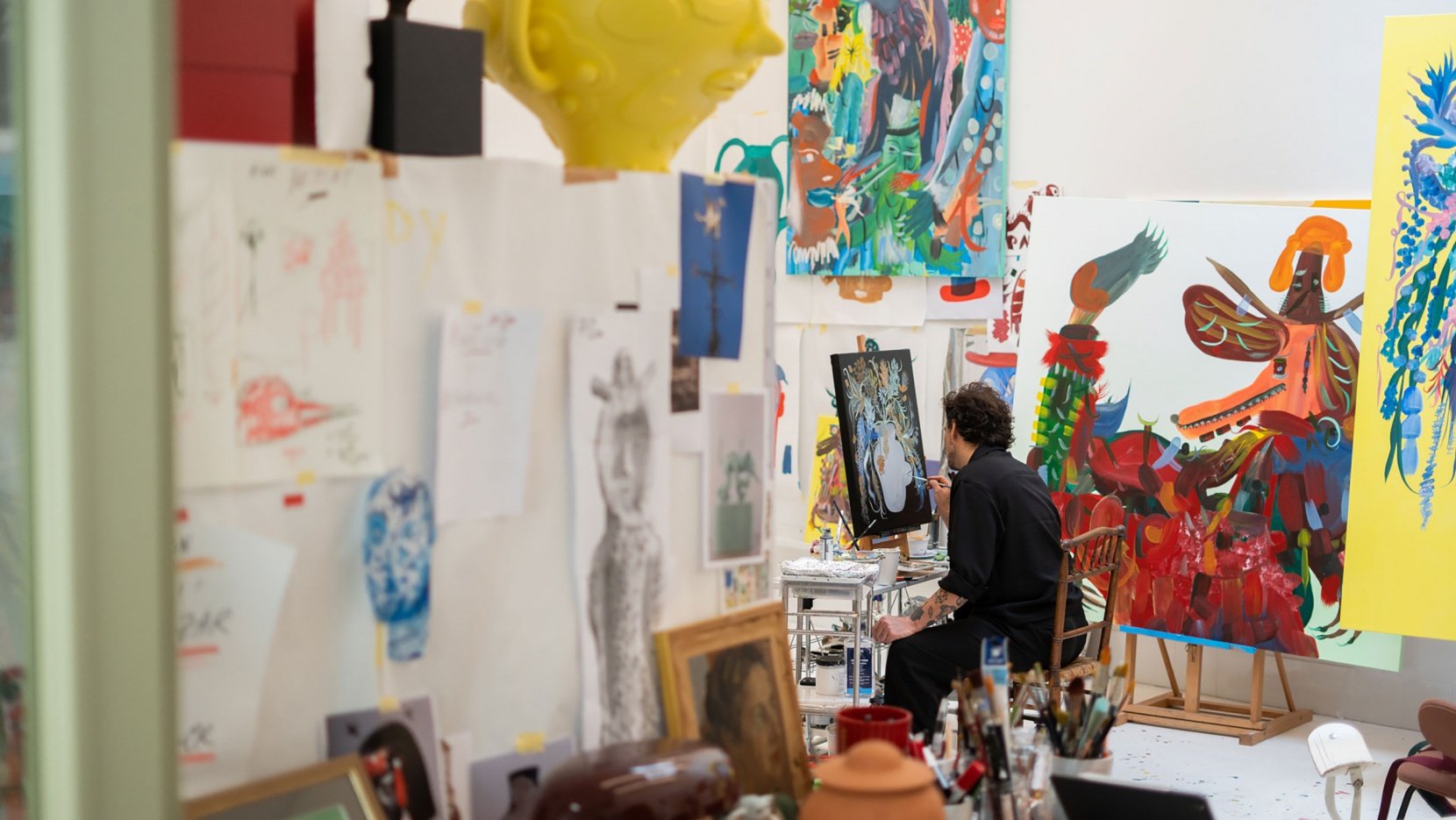
Jaime Hayon Goes Bestial at His Miami Art Show
The paintings on display are brimming with dynamic energy. A whirlwind of fantastical creatures leaps off the artist’s large canvases, while in smaller, still life paintings they are transformed into decorative elements. Underpinned by his perpetual search for self-understanding, Hayon’s troupe of kooky characters conveys a range of emotions, from fear and desire, to fragility and introspection. “With this exhibition, I am returning to the origin of everything—the most visceral part of my work,” the artist reflects. “From the very depths of my being, I attempt to express my fantasy, my world, through painting—those free-flowing brushstrokes that naturally create the beastly forms of fauna and flora.”
In his still life paintings, Hayon contrasts luminous colours against shadowy or muted backdrops, an aesthetic inspired by ancient Egyptian art and Flemish flower paintings. This interplay between light and dark adds an emotional depth to the works while linking them to a broader artistic heritage. “In Bestial, I highlight the crucial role animals have played in art history, symbolizing emotions and human experiences across civilizations,” Hayon explains. “From the Egyptians who humanized animals in their gods to artists like Picasso, Dalí, and Rousseau, animals have always expressed strength, rage, and passion.” By drawing on these historical precedents, Hayon bridges past and present, using the natural world as a mirror for human emotion and societal critique.

